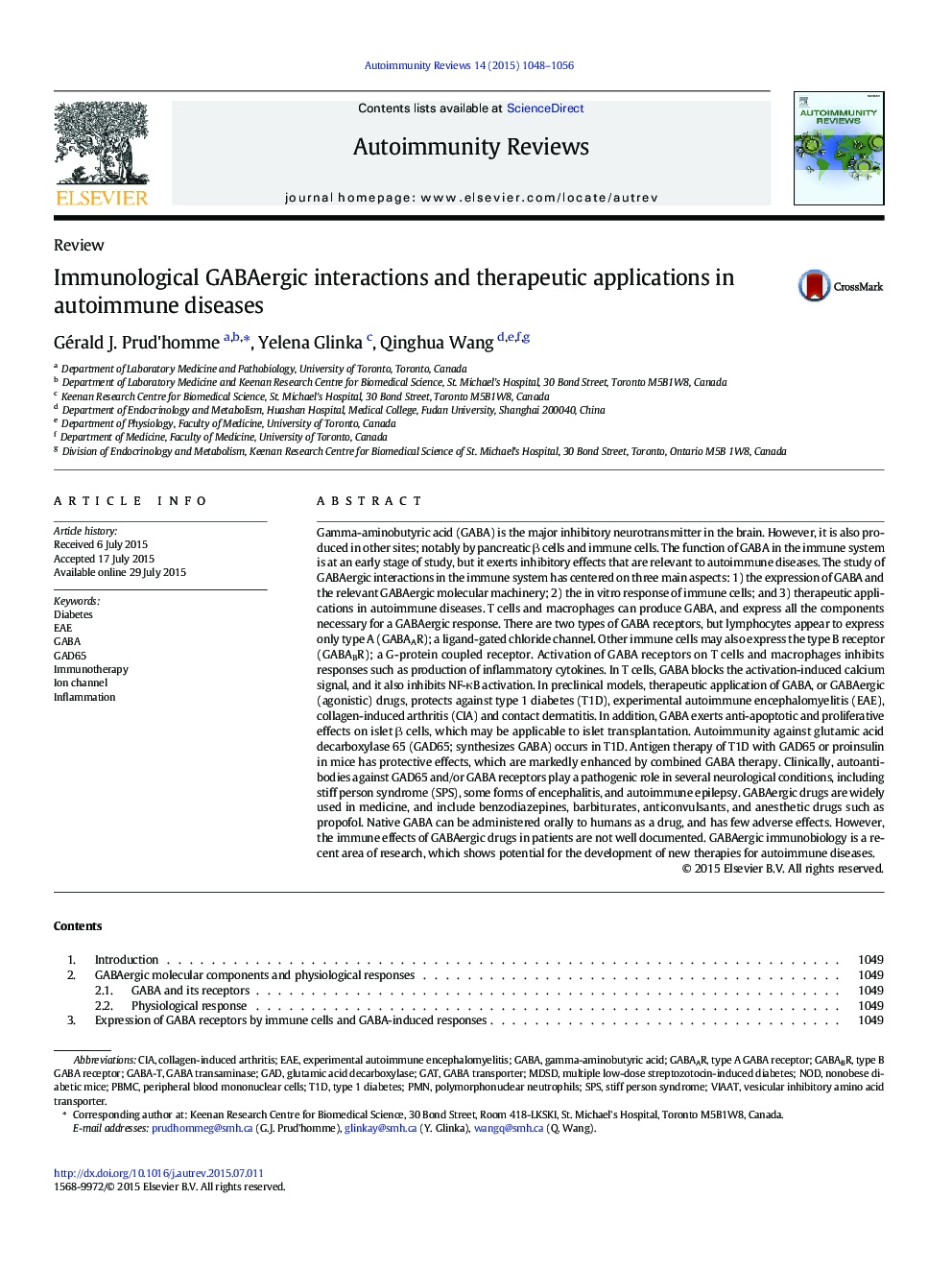| کد مقاله | کد نشریه | سال انتشار | مقاله انگلیسی | نسخه تمام متن |
|---|---|---|---|---|
| 3341392 | 1214204 | 2015 | 9 صفحه PDF | دانلود رایگان |

Gamma-aminobutyric acid (GABA) is the major inhibitory neurotransmitter in the brain. However, it is also produced in other sites; notably by pancreatic β cells and immune cells. The function of GABA in the immune system is at an early stage of study, but it exerts inhibitory effects that are relevant to autoimmune diseases. The study of GABAergic interactions in the immune system has centered on three main aspects: 1) the expression of GABA and the relevant GABAergic molecular machinery; 2) the in vitro response of immune cells; and 3) therapeutic applications in autoimmune diseases. T cells and macrophages can produce GABA, and express all the components necessary for a GABAergic response. There are two types of GABA receptors, but lymphocytes appear to express only type A (GABAAR); a ligand-gated chloride channel. Other immune cells may also express the type B receptor (GABABR); a G-protein coupled receptor. Activation of GABA receptors on T cells and macrophages inhibits responses such as production of inflammatory cytokines. In T cells, GABA blocks the activation-induced calcium signal, and it also inhibits NF-κB activation. In preclinical models, therapeutic application of GABA, or GABAergic (agonistic) drugs, protects against type 1 diabetes (T1D), experimental autoimmune encephalomyelitis (EAE), collagen-induced arthritis (CIA) and contact dermatitis. In addition, GABA exerts anti-apoptotic and proliferative effects on islet β cells, which may be applicable to islet transplantation. Autoimmunity against glutamic acid decarboxylase 65 (GAD65; synthesizes GABA) occurs in T1D. Antigen therapy of T1D with GAD65 or proinsulin in mice has protective effects, which are markedly enhanced by combined GABA therapy. Clinically, autoantibodies against GAD65 and/or GABA receptors play a pathogenic role in several neurological conditions, including stiff person syndrome (SPS), some forms of encephalitis, and autoimmune epilepsy. GABAergic drugs are widely used in medicine, and include benzodiazepines, barbiturates, anticonvulsants, and anesthetic drugs such as propofol. Native GABA can be administered orally to humans as a drug, and has few adverse effects. However, the immune effects of GABAergic drugs in patients are not well documented. GABAergic immunobiology is a recent area of research, which shows potential for the development of new therapies for autoimmune diseases.
Journal: Autoimmunity Reviews - Volume 14, Issue 11, November 2015, Pages 1048–1056